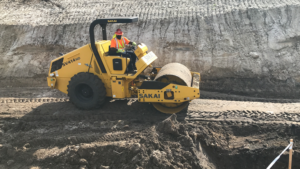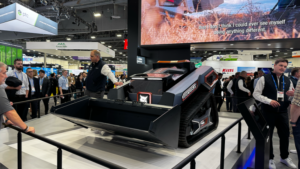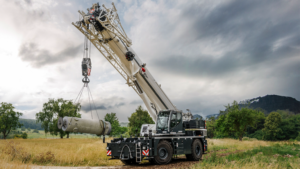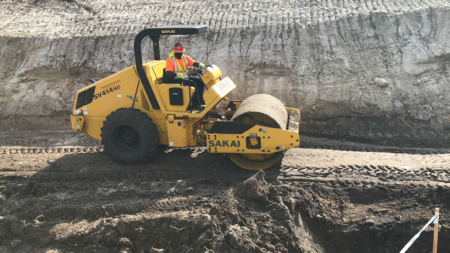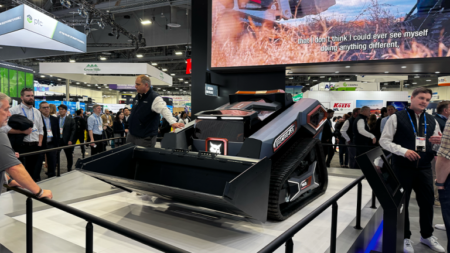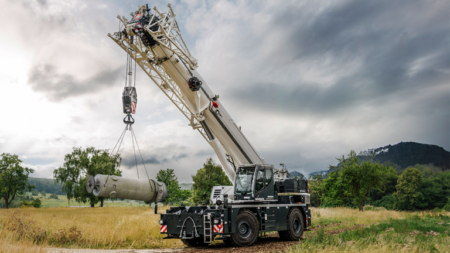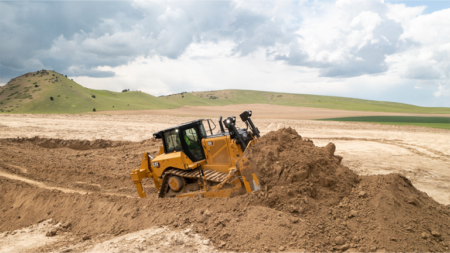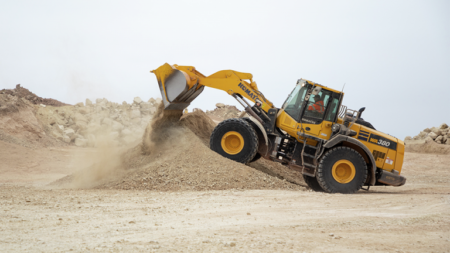
Photo courtesy of U.S. Army Corps of Engineers
A Komatsu excavator is ready to work at the Tillamook South Jetty repair project.
The town of Tillamook, Ore., is perhaps best known for its famous cheese, but around construction sites these days, it’s known for the excavator at work on the $52.7 million Tillamook South Jetty repair project. The customized excavator is believed to be one of just two in the world.
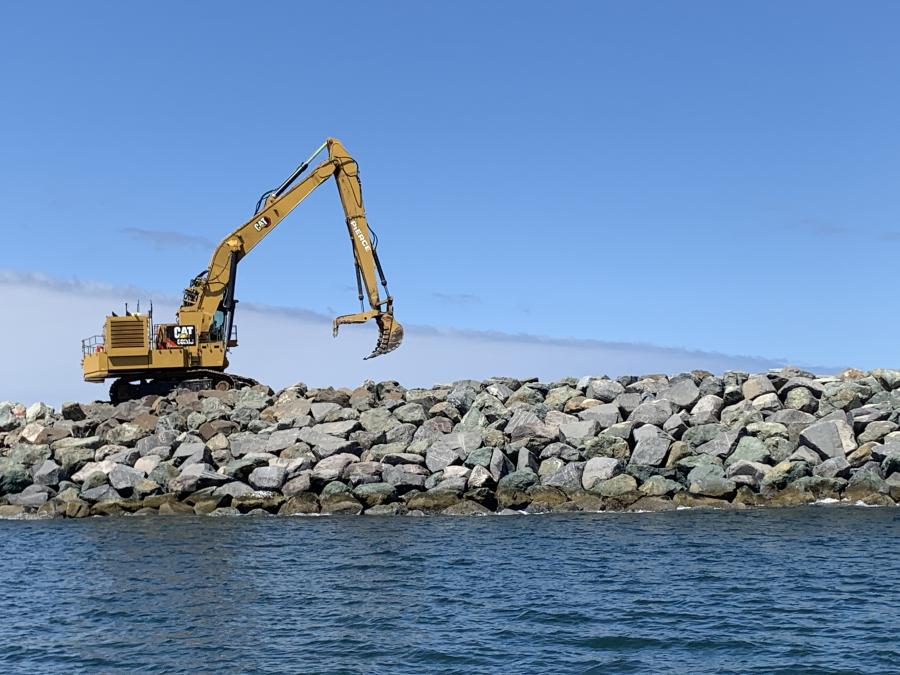
Photo courtesy of U.S. Army Corps of Engineers
“They’re unlike any excavators anywhere in the world,” said Colter Bennett, lead engineer of the U.S. Army Corps of Engineers (USACE), Portland District. “The contractor is likely to use a Cat 6020. That’s a large excavator, classified as a hydraulic shovel.
The contractor then gets the full front end — meaning the boom, the stick, the bucket and the thumb — custom-designed to have a longer reach capacity than the default configuration. They weigh about 560,000 lbs. and cost about $5 to $6 million. I’m sure there are hundreds of Cat 6020s in default configuration, but configured this way, they’re only two and they’re both in Oregon.”
The Tillamook South Jetty is about 50 miles south of the Columbia River and one of two jetties at the entrance of the Tillamook Bay leading to the Pacific Ocean. The north jetty was built in 1914; the south jetty was built more than 50 years later, with work beginning in 1969. It was finished at its full length of 8,025 ft. in 1979.
A jetty is designed to smooth the water at the bay entrance and to push river sediment into deeper water so it is easier and safer for boats to navigate. A jetty has a root — the place where it is tied to the land on at least one side; the trunk, where there is water on both sides; and the head, the large feature on the terminus of the jetty.
“What our designers do is they use wave data, usually gathered by buoy data close to the jetty, and they basically plug that data into a wave theory equation that then can get converted to force,” Bennett said. “They take all that data that’s getting gathered by buoy data, and they throw that in and say, ‘OK, in a large wave event, how much force does a stone in a specific location need to endure? And so, the force gets converted to mass, and then that tells us how large a stone needs to be sized.”
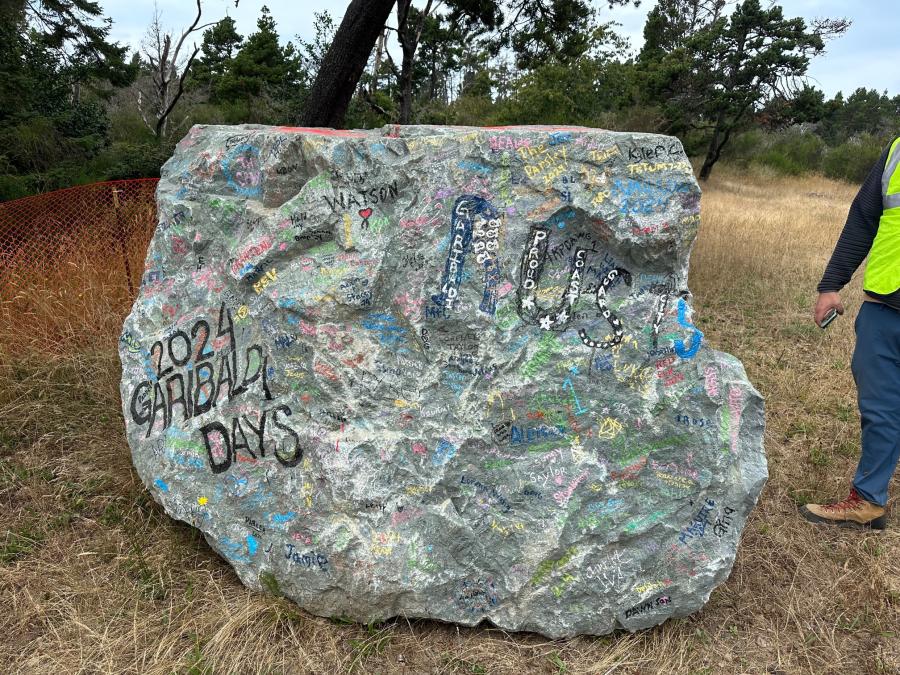
Photo courtesy of U.S. Army Corps of Engineers
Since the south jetty was completed, it has received no repairs despite having sustained damage and lost jetty length, according to the USACE.
“A recent apparent increase in the Pacific Ocean wave climate has exposed both jetties to more extreme storm waves, especially the south jetty, which is more exposed to southwesterly storm events,” the USACE said. “The south jetty’s head is destroyed, and the trunk continues to be damaged and lose length.
“Repairs to the south jetty head and trunk are needed to address existing damage caused by an increased wave climate to restore the structural integrity of the jetty, provide additional protection for the north jetty from large southerly waves, reduce navigational hazards to boaters, and ensure safe and reliable passage to commercial fishing boats.”
The repair work is done by placing “stones” of varying densities ranging in size from two tons to about 43 tons — the latter about the size of a Volkswagen van.
“The stone size on the South Jetty are the largest stones that can really safely be transported over the road,” Bennett said. “They have to be brought from the quarry and then put onto a barge and delivered by barge to our project. It’s going to be on the order of 100,000 tons of stone and the average stone probably weighs about 15 tons. So, a total of 6,000 to 7,000 stones.”
Small stones can be placed with excavators “uncommonly large but tend to have a custom front end — bucket, boom, stick — all custom configured,” Bennett said. The customized Cat 6020 comes in on the jetty head.
“The equipment is unique in the sense that it has a lot of power with a lot of reach,” Bennett said. “It’s essentially taking the capability of a crane and putting it into an excavator. And the reason we like to do that is because cranes can only pull everything once. A crane puts a stone down in place, they can’t really manipulate it again.
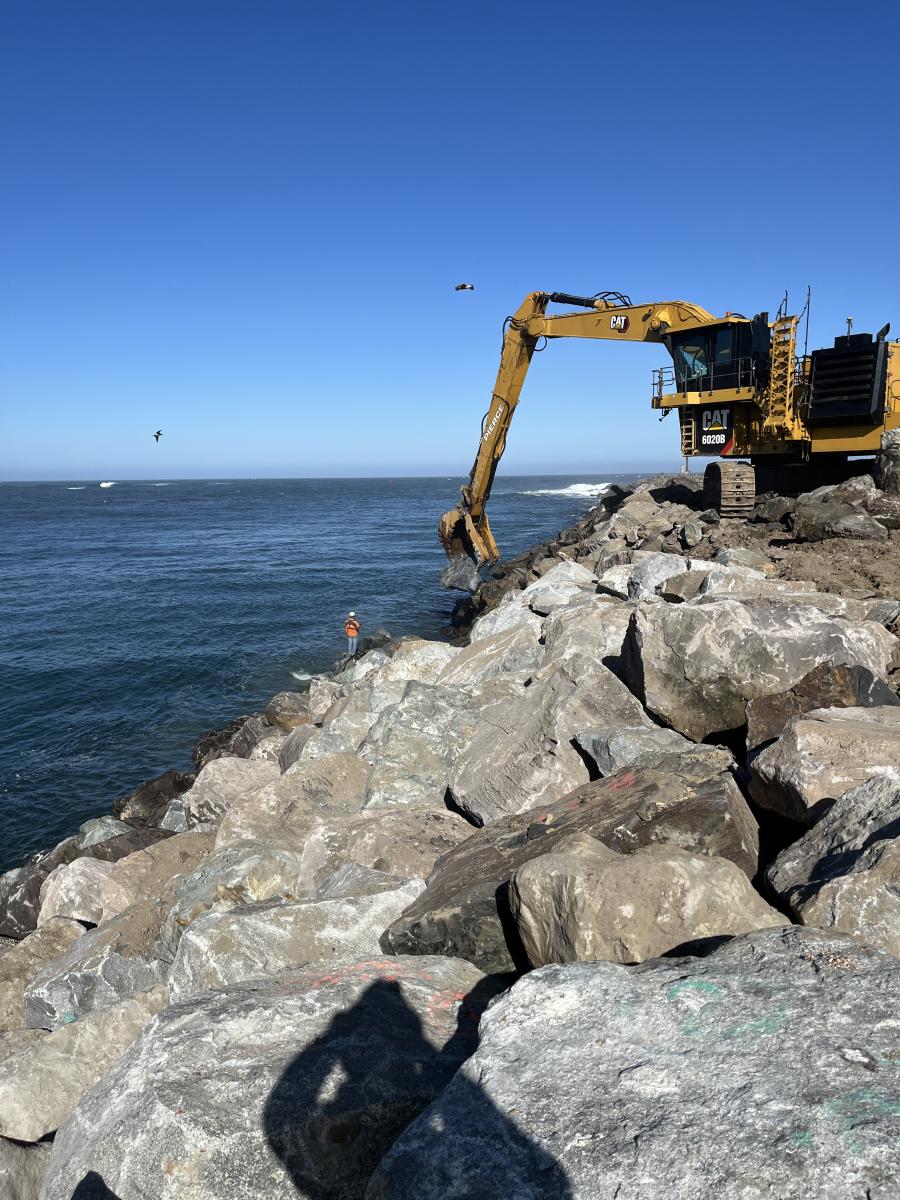
Photo courtesy of U.S. Army Corps of Engineers
“And what we’re trying to do at the jetty all the time is maximize stone-to-stone contact, maximize the lock. So, when you’re placing a 40-ton stone, you put it down with a crane and you can’t pick it back up and move it. You can’t nudge it over two inches or a foot to touch its neighbor. What the excavator can do is push and pull the stone. That’s the unique capability of these machines.”
A two-man team — an operator and a spotter— works with the Cat 6020. The operator places the stone while the spotter makes sure it is placed in the optimum spot.
“We’ve got a very specific way we like to lay the stones in all the districts,” Bennett said. “We’ve been managing the jetties for over 50 years, so we know what works and what doesn’t. When the jetty’s finished, people are always amazed that there are such even lines. They’re really supposed to be kind of a flat horizontal crest and two gentle slopes on both sides.
“If you look down the side of a newly finished jetty, you’ll be amazed at how clean those lines are. It’s because that equipment has GPS built into it. They are building the lines and grade that are designed.”
The project is set for completion in October 2025.
Lori Tobias
Lori Tobias is a journalist of more years than she cares to count, most recently as a staff writer for The Oregonian and previously as a columnist and features writer for the Rocky Mountain News. She is the author of the memoir, Storm Beat – A Journalist Reports from the Oregon Coast, and the novel Wander, winner of the Nancy Pearl Literary Award in 2017. She has freelanced for numerous publications, including The New York Times, The Denver Post, Alaska Airlines in-flight, Natural Home, Spotlight Germany, Vegetarian Times and the Miami Herald. She is an avid reader, enjoys kayaking, traveling and exploring the Oregon Coast where she lives with her husband Chan and rescue pups, Gus and Lily.
Read the full article here

